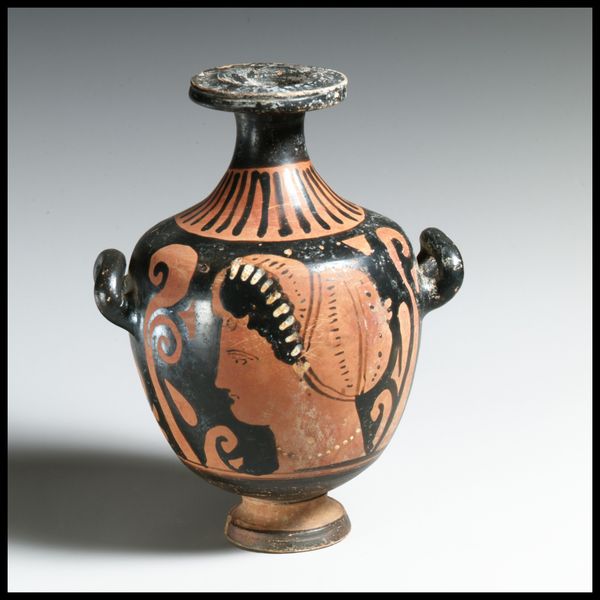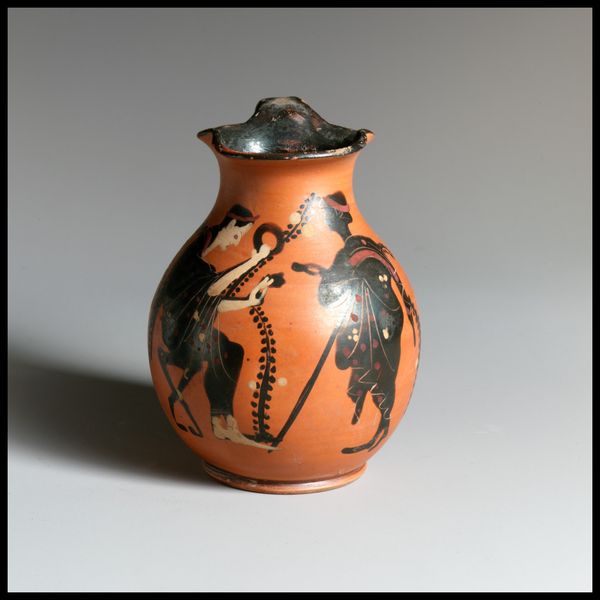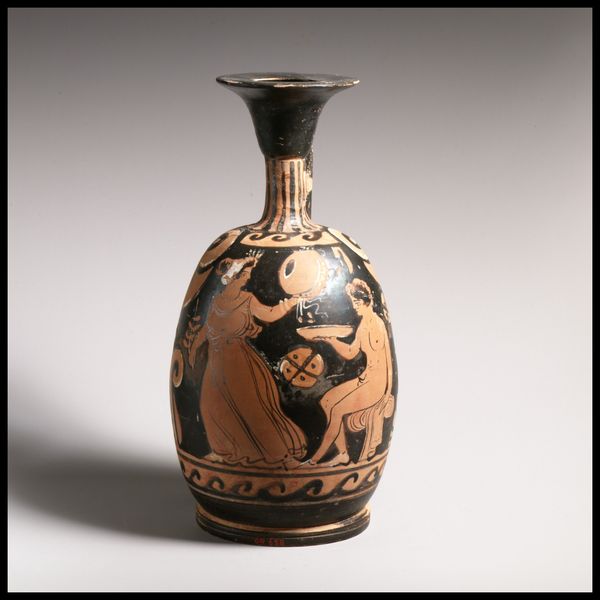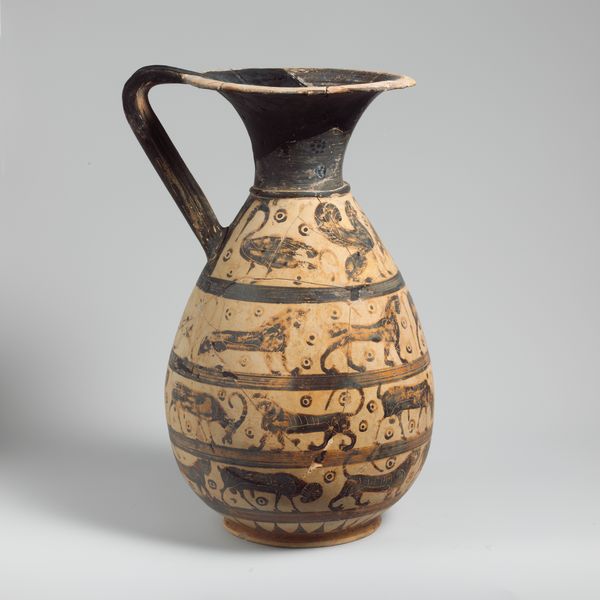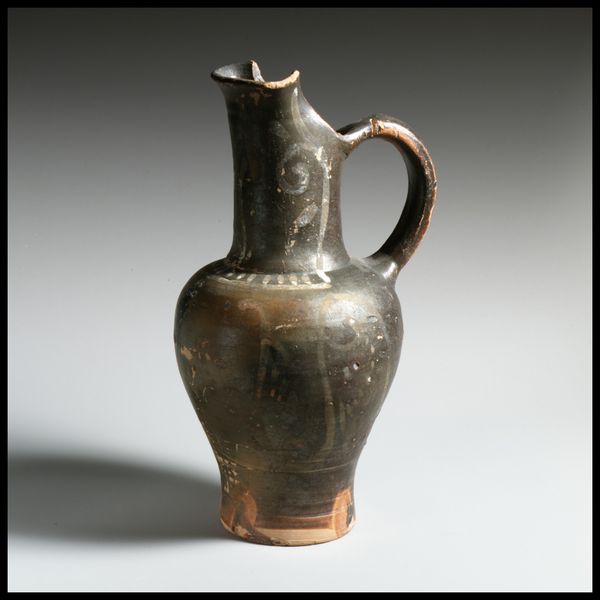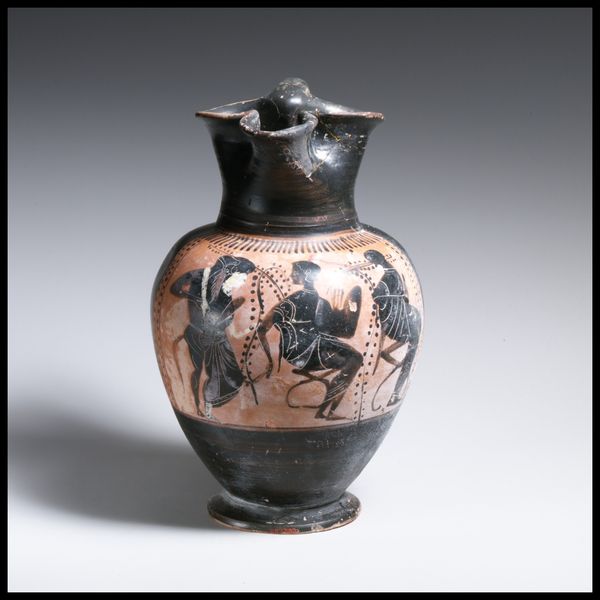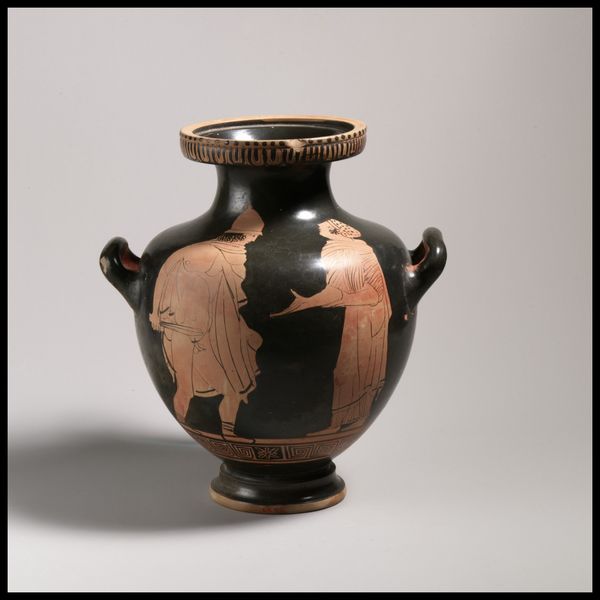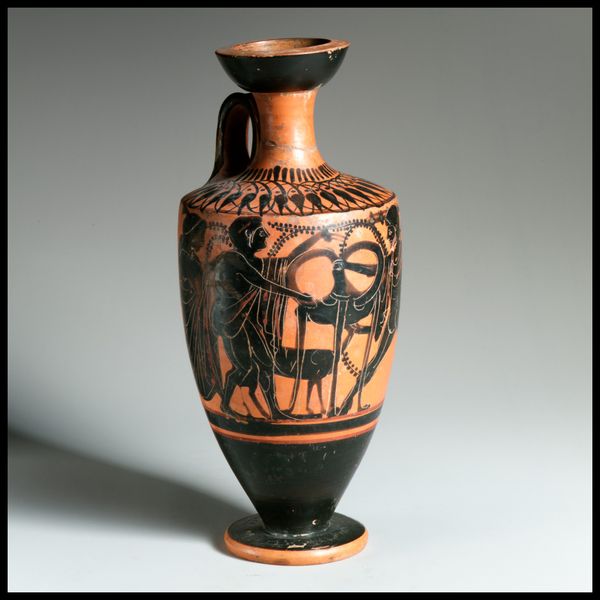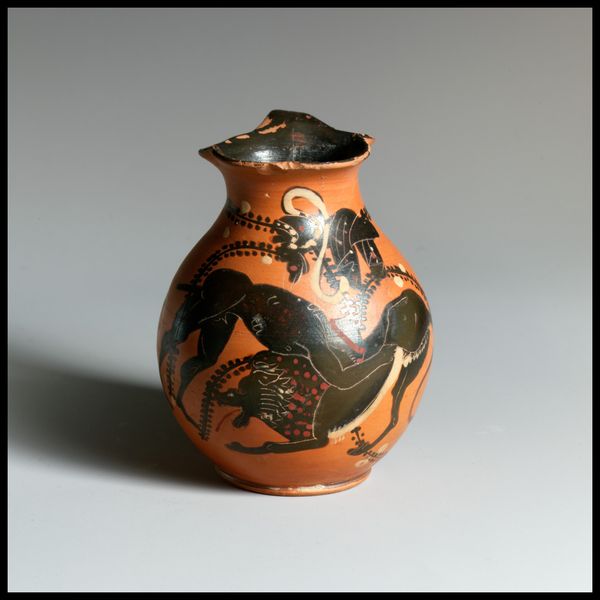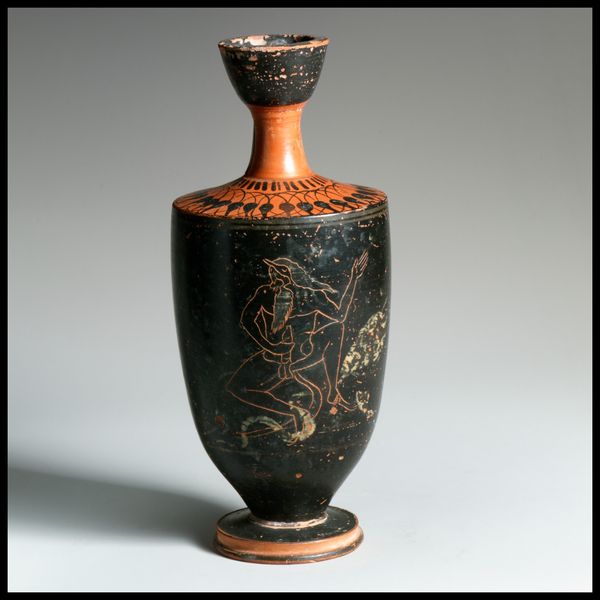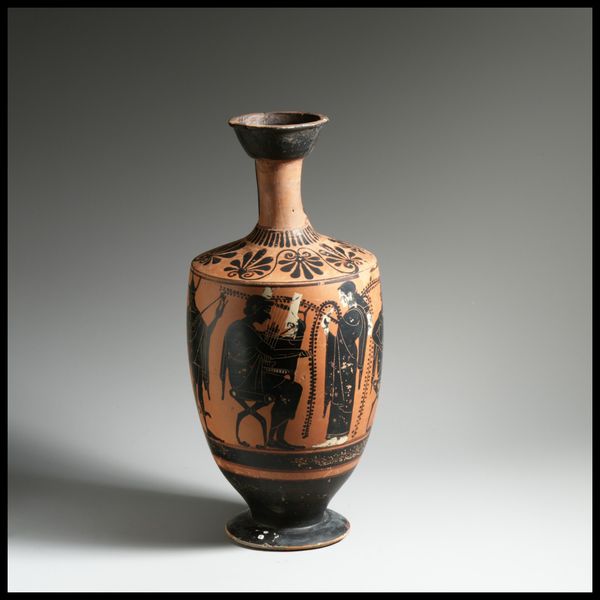
ceramic, earthenware
#
greek-and-roman-art
#
ceramic
#
figuration
#
earthenware
#
ancient-mediterranean
#
ceramic
#
earthenware
#
decorative-art
Dimensions: H. 5 1/8 in. (13 cm)
Copyright: Public Domain
Curator: Here we have a terracotta oinochoe, a chous or jug, created around 350 BC by the Heavy Chin Group. It is currently held in the collection of the Metropolitan Museum of Art. Editor: It’s a striking piece. The dark slip, contrasted against the pale stylized figures, creates a mood that's both elegant and grounded. It feels simultaneously delicate and incredibly durable, doesn’t it? Curator: Precisely. Look at the labor involved in crafting this object; the extraction of the clay, the precise turning on the wheel, and the sophisticated firing techniques all speak to the highly specialized and hierarchical labor systems prevalent at the time. This wasn't just functional, but also a display of skill. Editor: Absolutely, and a display inextricably linked to power and social structure. The chous itself was typically associated with the Anthesteria festival, a festival of Dionysus and a period during which social norms were inverted and re-evaluated. The jugs held a ritual significance. Curator: Exactly. Think of the pigments themselves: likely derived from minerals, carefully ground and applied by hand, telling us something about trade routes and the value placed on artistic production. Editor: It's important to remember these jugs weren’t just for the elite. While some were undoubtedly luxury goods, many were also used by ordinary Athenians. It poses critical questions about identity formation: How did the availability of decorated pottery shape social cohesion or divisions? What narratives about themselves were ordinary Athenians able to actively participate in via use of ceramics in the marketplace, domestic life, and ritual? Curator: The production sites, too, provide fertile ground for exploring these narratives. Where was the clay sourced? What were the working conditions like? Were there enslaved artisans involved in the making? All points of intersection related to labor practices. Editor: Seeing these ancient objects helps to confront issues around colonialism as well; who decided it was of better use as a display item in New York rather than being left in its original geographical, and therefore, social and historic context? It raises significant questions concerning agency and ownership. Curator: Indeed. Focusing on process unveils that cultural context that complicates assumptions around aesthetic experience. Editor: Precisely. Viewing the piece now, I see not just a beautiful jug, but the layered, intersectional, messy reality of its existence— and continued life, continents and millennia away from its makers.
Comments
No comments
Be the first to comment and join the conversation on the ultimate creative platform.

